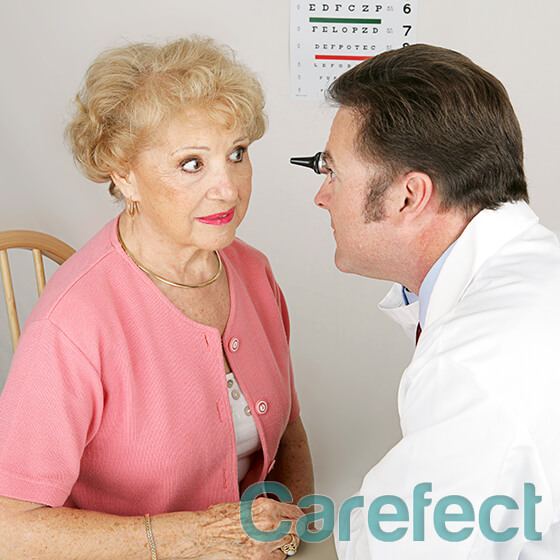Despite the fact that cataracts represent one of the leading causes of blindness worldwide, there is significant misinformation about the formation of cataracts and the surgical procedures that remove them. Myths and old wives’ tales regarding health are common in the health community. Old wives’ tales can sometimes be true and based on a history of experience. However, some myths can be damaging, so it is important to believe medical information from an expert in their field.
Cataracts are the predominant cause of blindness with more cases than glaucoma, diabetic retinopathy, and macular degeneration and are more commonly affecting seniors. In Canada, at least half of older adults will have been affected by a cataract. Due to this prevalence, it is important to be aware of the false information regarding cataracts.
Here are some myths Regarding Cataracts:
Cataracts are Preventable
Preventable medicine can be an excellent strategy in a lot of our health conditions. Preventing something from happening or lowering the chances of them happening is better than having to solve the condition afterward. This is why healthy living is so important to build into your schedule. A healthy schedule includes sleeping enough, eating healthy and participating in daily light exercise which are all great ways of minimizing your chance of developing harmful health conditions. However, not everything is preventable, and no matter how hard you try some health conditions may happen regardless. Cataracts are not preventable and there is no evidence or research done to prove that there are effective strategies that reduce the risk of developing cataracts or even slowing its progression. While cataracts are not preventable, there are strategies that you can use in order to mitigate risk. As people age, they must go to the doctor, dentist and other health practitioners more often. This is the same with optometrists. An older adult should be visiting their eye-care health professional on a yearly basis. These visits will help identify signs or symptoms of cataracts and other eye related diseases. It will not prevent cataracts but it will identify them quicker which can help you receive the necessary care sooner. Another aspect is tying back to healthy living. Eyes are a part of your body and your body is fueled by nutrition and rest. Eating healthy and including lots of fruits and vegetables can help get your body the nutrition it needs for healthy development. As well, some habits to avoid are excessive smoking and drinking as those can hinder your body’s ability to function properly. One aspect that can assist in mitigating the development of cataracts is avoiding overexposure to sunlight. Wearing sunglasses with 100% UVA and UVB protection can help keep your eyes safe from excessive ultraviolet light.
Cataracts are Growths
Some people think that cataracts are growing on the eye but that is not entirely true. Cataracts are not a type of growth; it is a result of protein fibers clumping together and clouding the eyes lenses which will then cause light to become scattered or blocked. A scattered or blocked lens prohibits the retina from receiving a clear and defined image. Cataracts, as stated above, are caused by overexposure to ultraviolet light, eye injury, or can even be caused by diabetes. While blurred vision may be the most commonly reported symptom, people with cataracts also experience sensitivity to light, double vision, adjustments to color perception, and increase difficulty with nighttime vision.
Cataract Surgery is Dangerous
In general, surgery has the perception of being dangerous with a long recovery time and this can compound the fear that people have regarding eye related surgeries. However, surgery has come a long way in technological advancements and cataract surgery is regarded as one of the safest medical procedures with an overwhelming success rate of over 90%. Sedation, especially medical sedation, can also make people feel nervous. However, cataract surgery only requires minimal sedation which allows people up to 90 years old to undergo the procedure. As well, even the post-surgery recovery is significantly less demanding than other surgeries. For three weeks, patients need to refrain from rubbing their eyes and doing physically demanding work. While the success rate may seem impressive, it is important to get a specific consultation with your family doctor and surgeon before agreeing to any type of surgery, even cataract surgery. However, cataract surgery is also a significantly beneficial way of removing the cataract. Another myth is that cataracts can come back even after it has been surgically removed from the lens. This is simply not true. In the years following the surgery, a secondary cataract may develop however it is not the same original cataract. As well, the secondary cataract develops when the membrane that holds the artificial lens implant becomes cloudy and this can be corrected with a YAG laser capsulotomy. A capsulotomy is a quick and painless procedure that restores visual acuity.
Cataracts and cataract surgery have many misconceptions regarding the condition. However, myth busting the misinformation is an effective way of combating ignorance about a condition that affects over half of older adults. If cataract surgery is the right choice for you according to your doctor’s recommendation, ensure you are planning for adequate care. While the recovery is only a month and is not physically intensive. It may be difficult for older seniors or disabled seniors. Hiring a personal caregiver to provide mobility aid, medication distribution and assistance with chores can help ease the burden off the senior who can focus on healing.
If you enjoyed this article, we also recommend these related posts in our Home Care Services blog:

